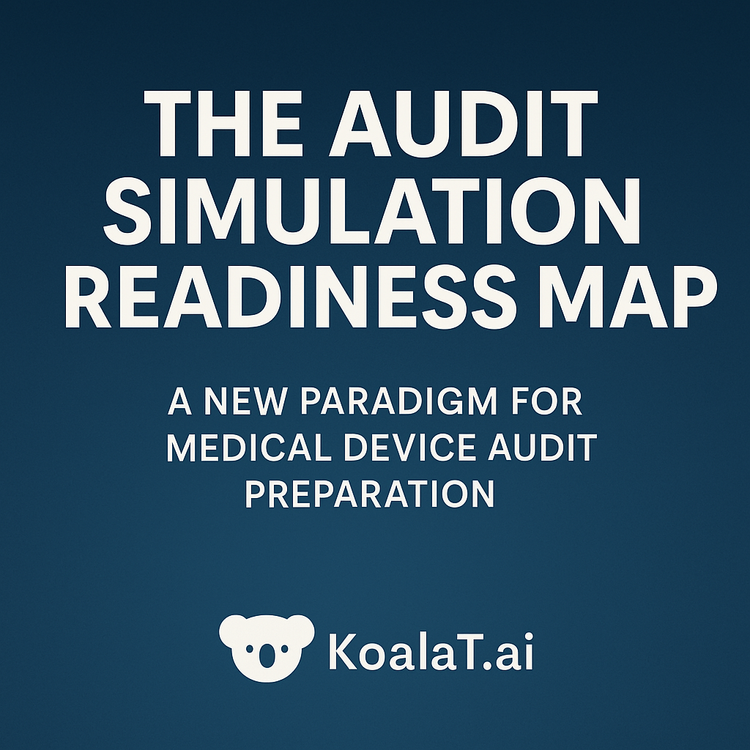Navigating the Complexities of EU MDR Compliance: How AI is Revolutionizing Regulatory Readiness

The European Union Medical Device Regulation (EU MDR) represents one of the most significant regulatory changes for the medical device industry in recent years. With its stringent requirements and rigorous expectations, companies are facing increasing pressure to ensure full compliance. However, traditional compliance methods can be time-consuming, resource-intensive, and prone to errors. This is where Artificial Intelligence (AI) steps in as a game-changer.
In this post, we’ll explore how AI is transforming the landscape of regulatory compliance, making it easier for companies to navigate the complexities of EU MDR and stay ahead in an increasingly competitive market.
Understanding EU MDR: A New Era of Regulatory Scrutiny
The EU MDR, which came into full effect in May 2021, has introduced more comprehensive requirements for medical device manufacturers. It emphasizes stricter control over clinical evaluation, post-market surveillance, and traceability throughout the supply chain. Key changes include:
- Expanded Scope: The regulation now covers a broader range of devices, including some that were previously unregulated.
- Enhanced Safety and Performance Requirements: Manufacturers must provide extensive clinical data to prove device safety and effectiveness.
- Stringent Post-Market Surveillance: Continuous monitoring of devices in the market is required, with the need for regular updates to clinical evaluation reports.
These changes have increased the workload for regulatory affairs teams, making compliance a more complex and ongoing process.
The Role of AI in Simplifying Compliance
AI offers several advantages in managing the complexities of EU MDR compliance:
- Automated Document Management: AI-driven systems can automate the creation, storage, and retrieval of regulatory documents, ensuring that all necessary documentation is readily available and up-to-date. This reduces the risk of non-compliance due to missing or outdated records.
- Enhanced Data Analysis: AI can analyze large volumes of clinical data quickly and accurately, identifying trends and potential issues that might be missed by human reviewers. This capability is crucial for the continuous monitoring required by EU MDR.
- Predictive Compliance: AI can predict potential regulatory challenges by analyzing historical data and current trends. This allows companies to proactively address issues before they become significant problems, reducing the likelihood of costly delays or penalties.
- Efficient Risk Management: AI tools can assess risks associated with different devices, processes, and suppliers, helping companies prioritize their compliance efforts and allocate resources more effectively.
Case Study: AI-Driven Compliance in Action
Let’s consider a real-world example of a company that successfully integrated AI into their EU MDR compliance strategy. A mid-sized medical device manufacturer was struggling to keep up with the increased documentation requirements and post-market surveillance demands. By implementing an AI-driven compliance tool, they were able to:
- Reduce Document Processing Time by 50%: Automated document management allowed the company to cut down on the time spent preparing and reviewing regulatory submissions.
- Improve Data Accuracy: AI-powered data analysis helped the company identify inconsistencies in clinical data early, ensuring that their submissions were accurate and complete.
- Enhance Risk Management: The AI tool’s predictive analytics capabilities allowed the company to focus on high-risk areas, improving their overall compliance posture.
As a result, the company not only met EU MDR requirements but also positioned itself as a leader in regulatory readiness, gaining a competitive edge in the market.
Steps to Implement AI for EU MDR Compliance
If your organization is looking to leverage AI to simplify EU MDR compliance, here’s a step-by-step guide to get started:
- Assess Your Current Compliance Processes: Begin by identifying the areas where AI could add the most value, such as document management, data analysis, or risk management.
- Choose the Right AI Tools: Not all AI solutions are created equal. Select tools that are specifically designed for regulatory compliance and that can integrate seamlessly with your existing systems.
- Pilot the Solution: Start with a small-scale pilot to test the AI tool’s effectiveness in your specific environment. This will allow you to identify any challenges and make adjustments before full implementation.
- Train Your Team: Ensure that your regulatory affairs team is trained on how to use the AI tools effectively. This includes understanding the tool’s capabilities and how to interpret the results it generates.
- Monitor and Optimize: Once the AI solution is fully implemented, continuously monitor its performance and make improvements as needed. AI is a powerful tool, but its effectiveness depends on how well it’s integrated into your overall compliance strategy.
The EU MDR has raised the bar for regulatory compliance in the medical device industry, but with the right tools, these challenges can be met head-on. AI is revolutionizing the way companies approach compliance, making it easier, faster, and more effective. By integrating AI into your compliance processes, you can not only meet EU MDR requirements but also gain a strategic advantage in a highly competitive market.
Ready to explore how AI can enhance your EU MDR compliance strategy?
Contact KoalaT.ai today for a free consultation and see how our AI-driven solutions can help you navigate the complexities of regulatory compliance with ease.





